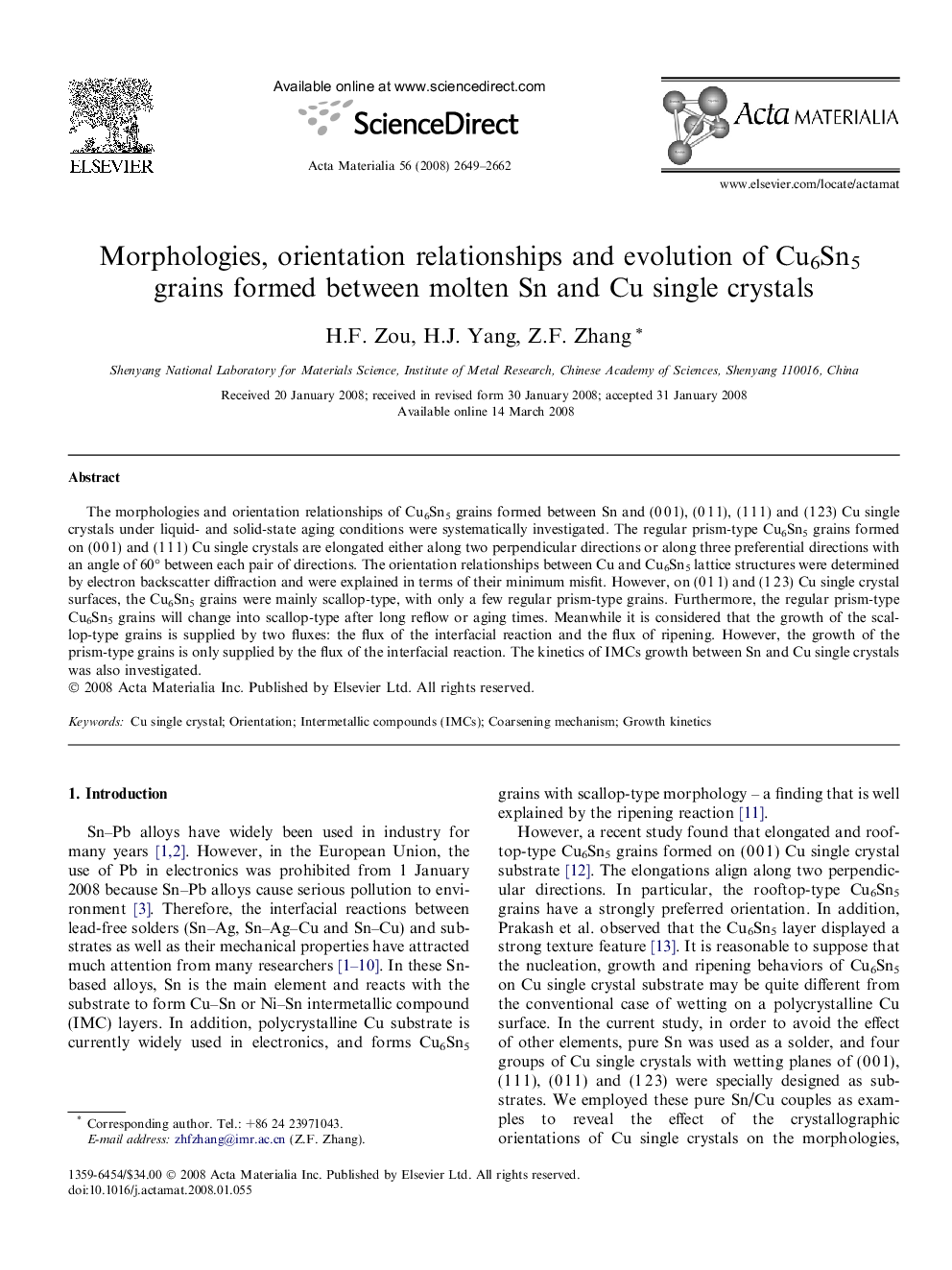| Article ID | Journal | Published Year | Pages | File Type |
|---|---|---|---|---|
| 1448731 | Acta Materialia | 2008 | 14 Pages |
The morphologies and orientation relationships of Cu6Sn5 grains formed between Sn and (0 0 1), (0 1 1), (1 1 1) and (1 23) Cu single crystals under liquid- and solid-state aging conditions were systematically investigated. The regular prism-type Cu6Sn5 grains formed on (0 0 1) and (1 1 1) Cu single crystals are elongated either along two perpendicular directions or along three preferential directions with an angle of 60° between each pair of directions. The orientation relationships between Cu and Cu6Sn5 lattice structures were determined by electron backscatter diffraction and were explained in terms of their minimum misfit. However, on (0 1 1) and (1 2 3) Cu single crystal surfaces, the Cu6Sn5 grains were mainly scallop-type, with only a few regular prism-type grains. Furthermore, the regular prism-type Cu6Sn5 grains will change into scallop-type after long reflow or aging times. Meanwhile it is considered that the growth of the scallop-type grains is supplied by two fluxes: the flux of the interfacial reaction and the flux of ripening. However, the growth of the prism-type grains is only supplied by the flux of the interfacial reaction. The kinetics of IMCs growth between Sn and Cu single crystals was also investigated.
